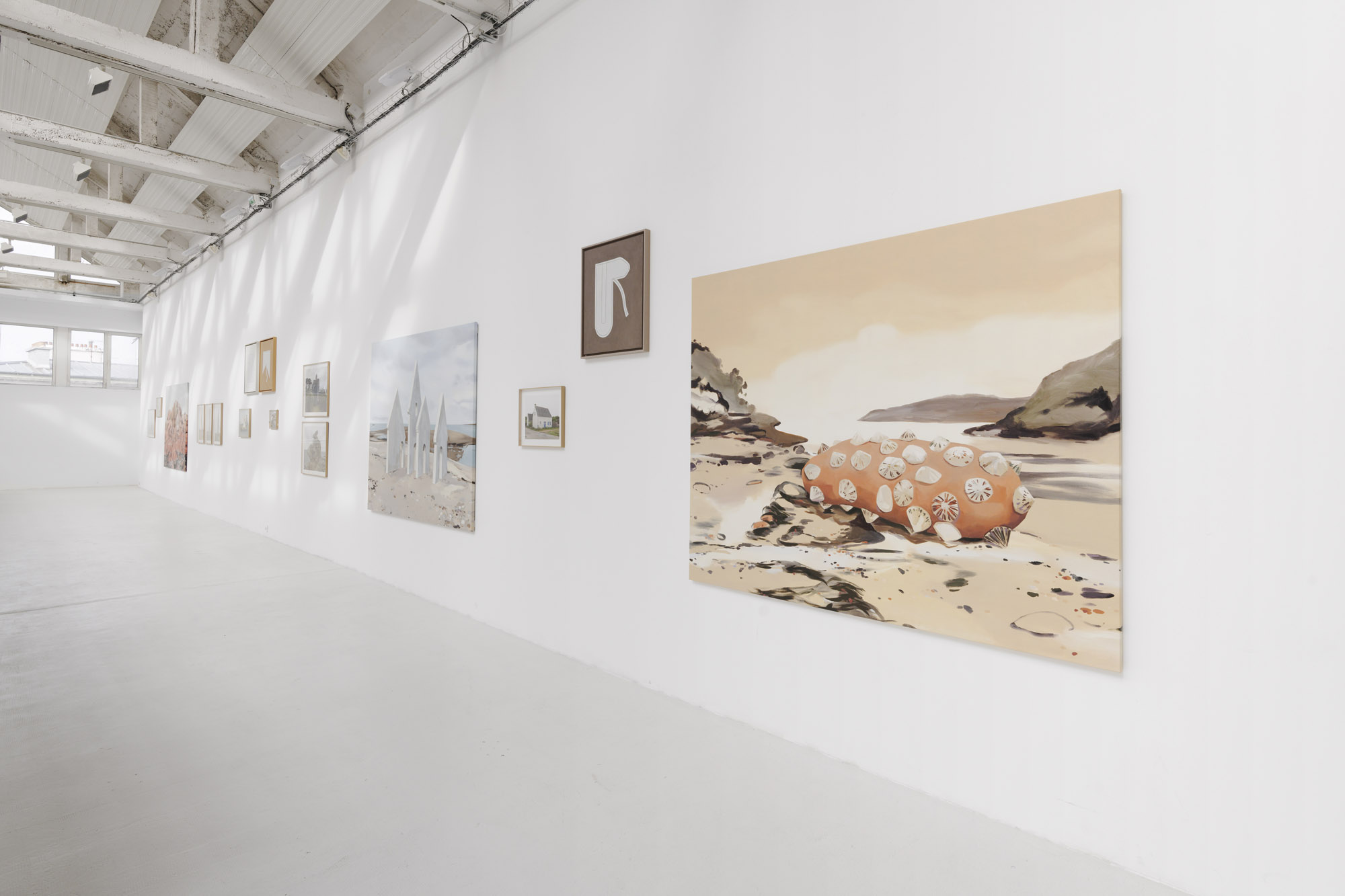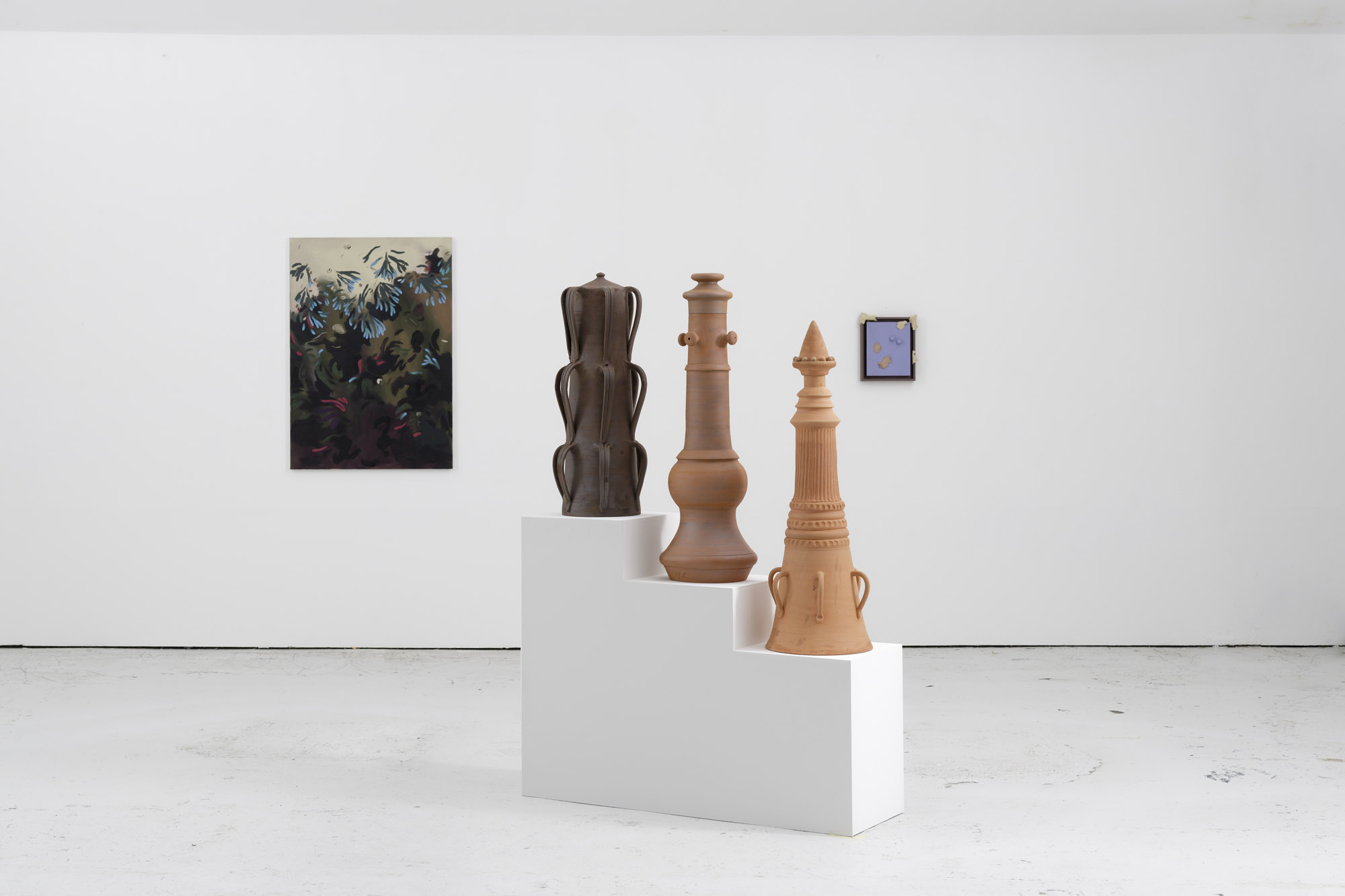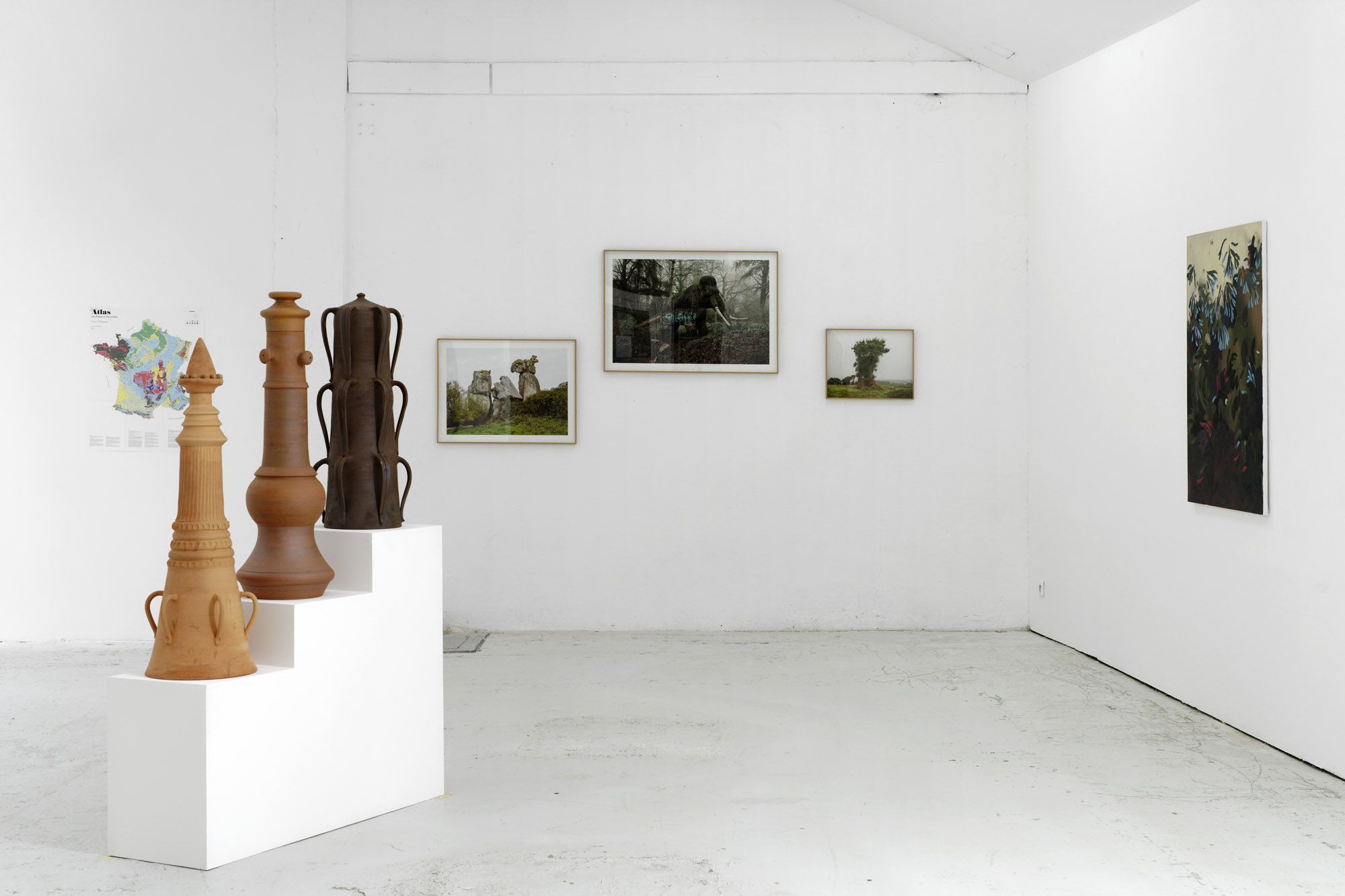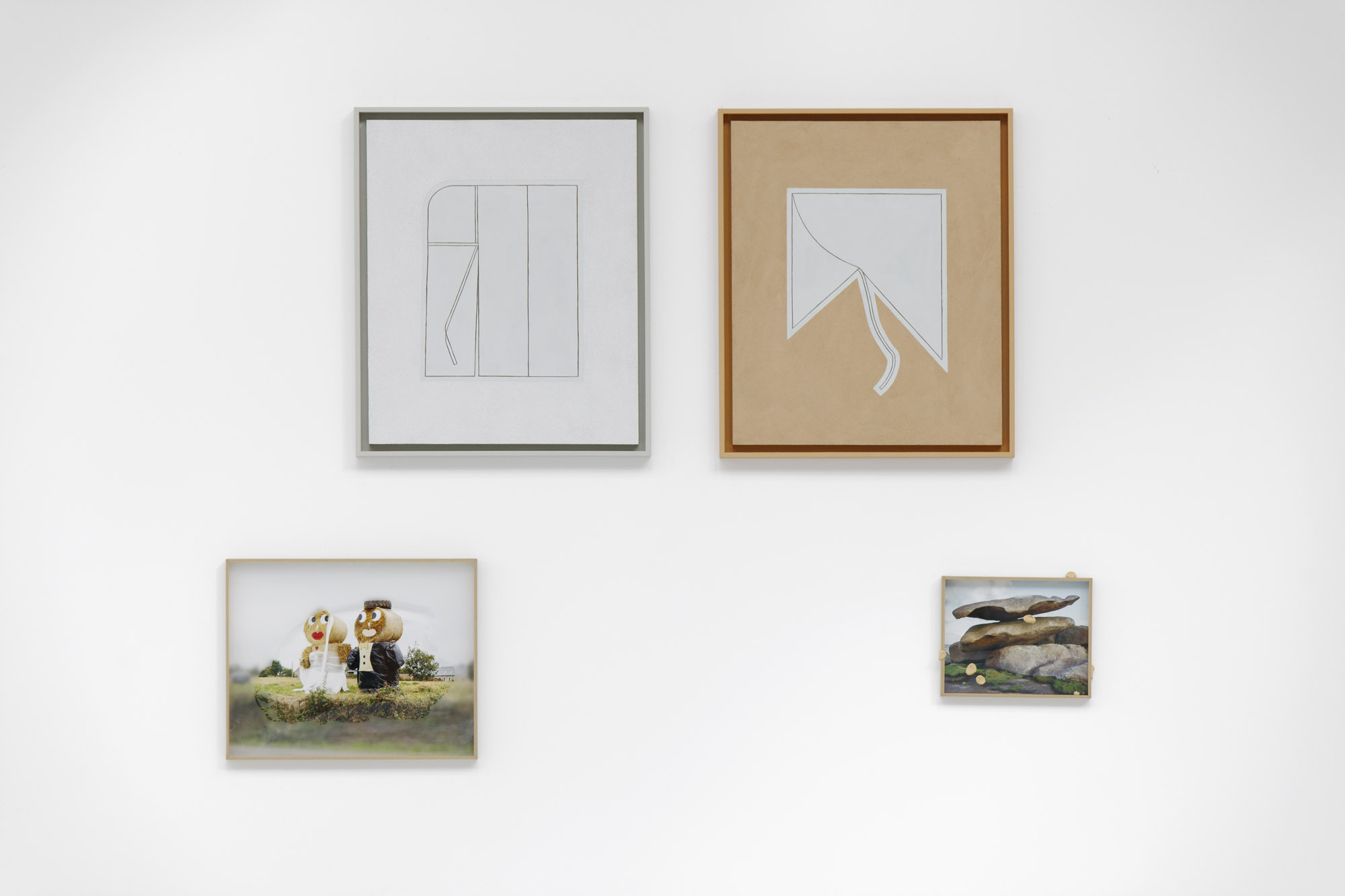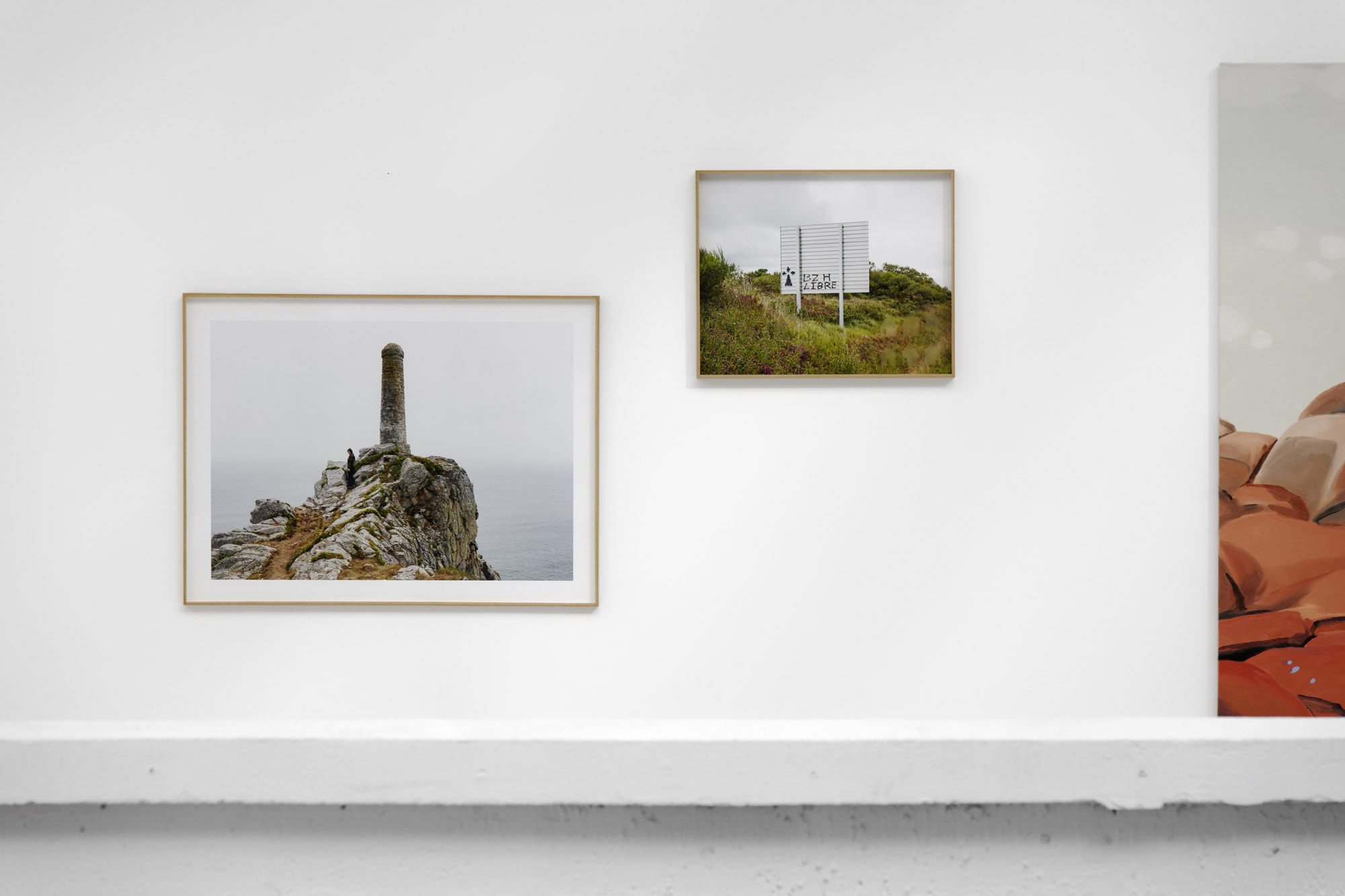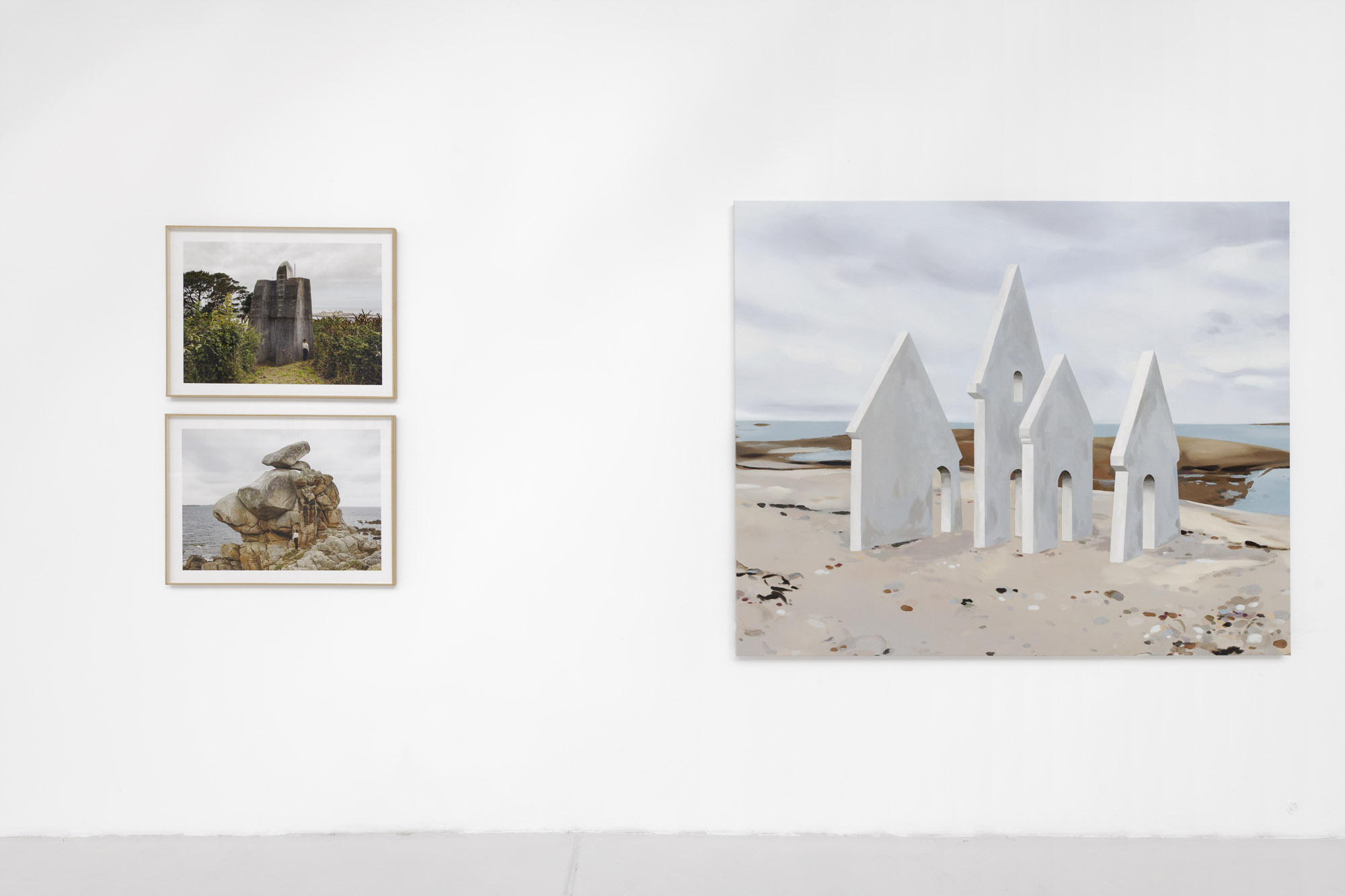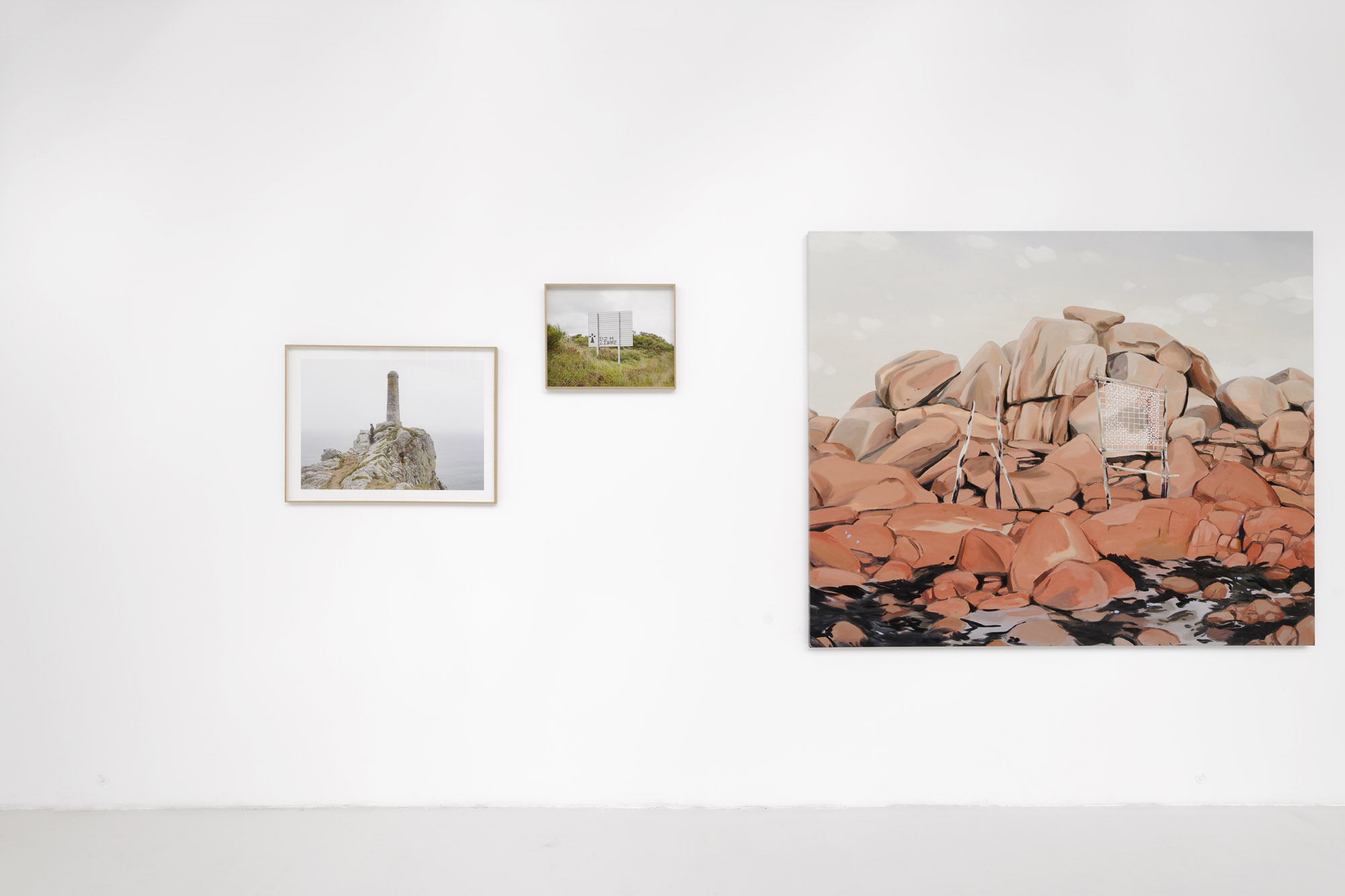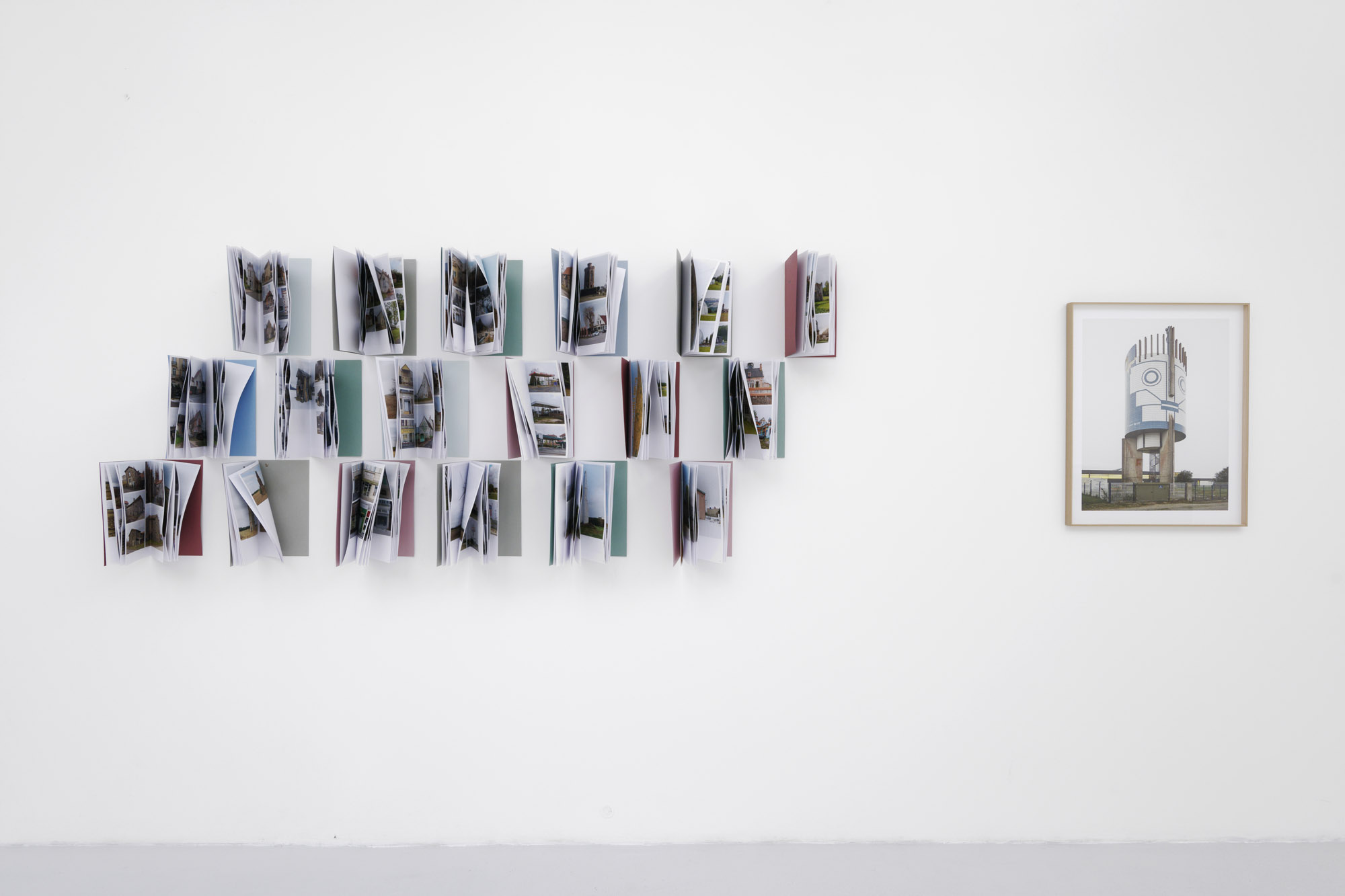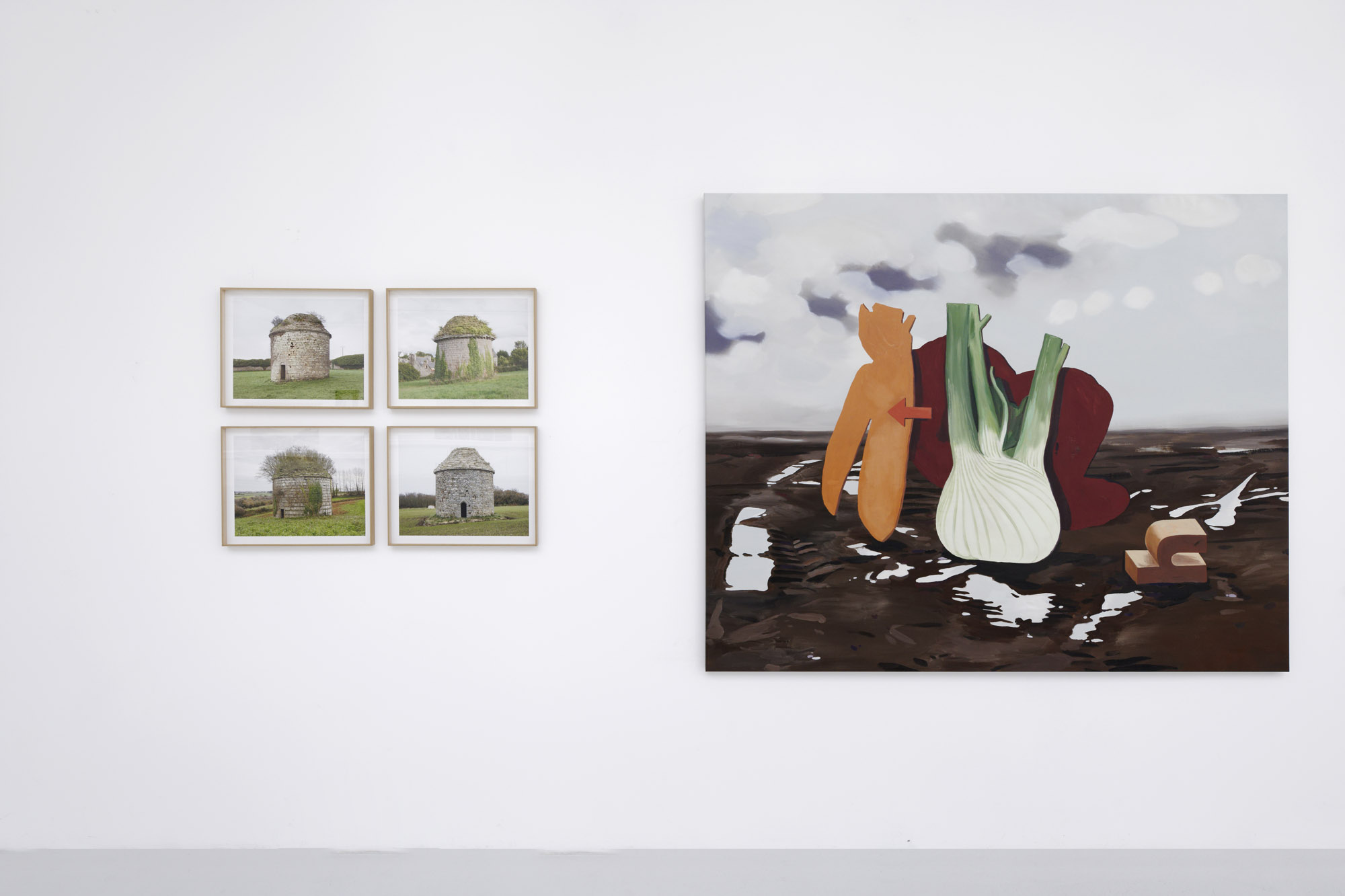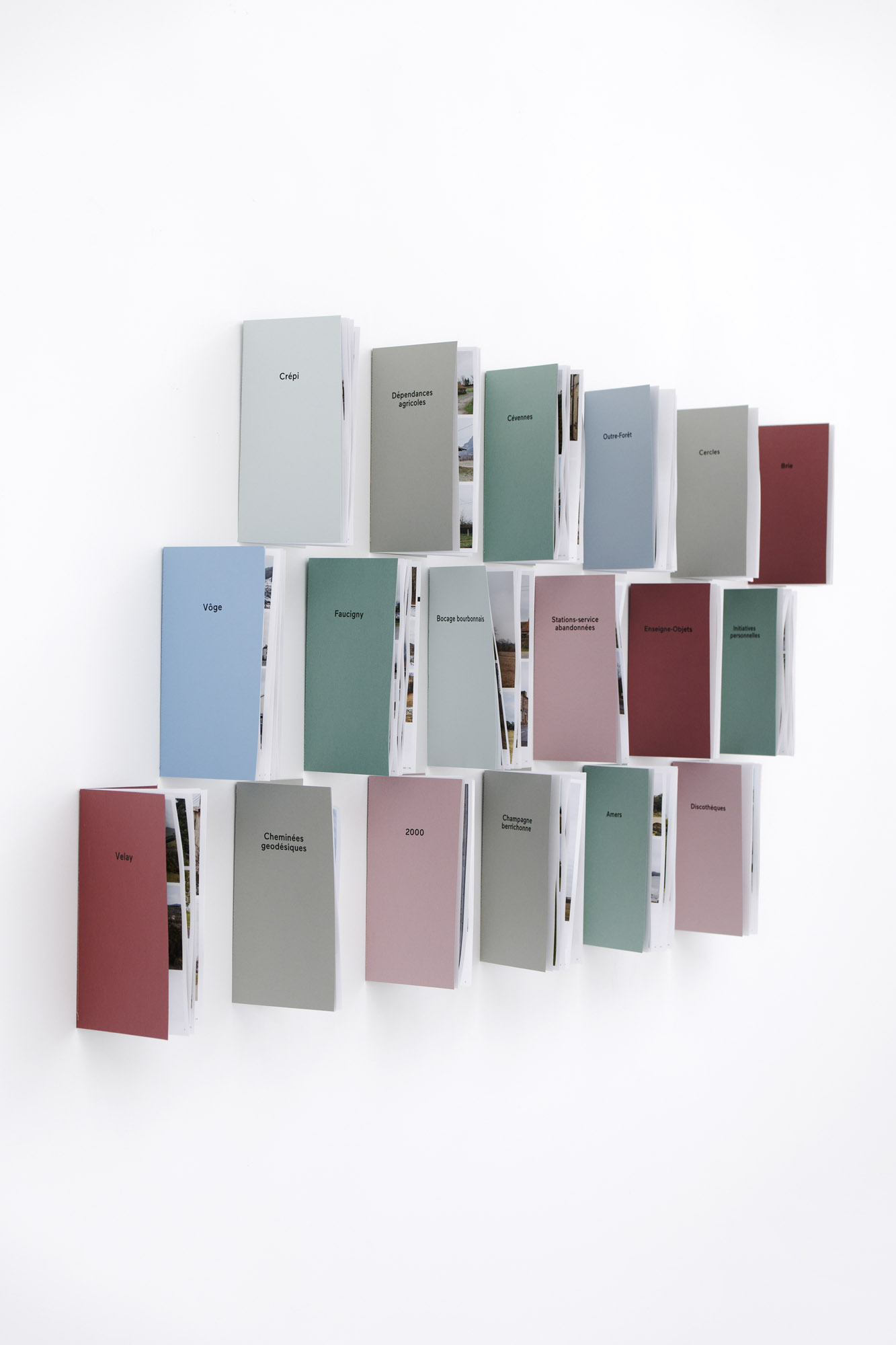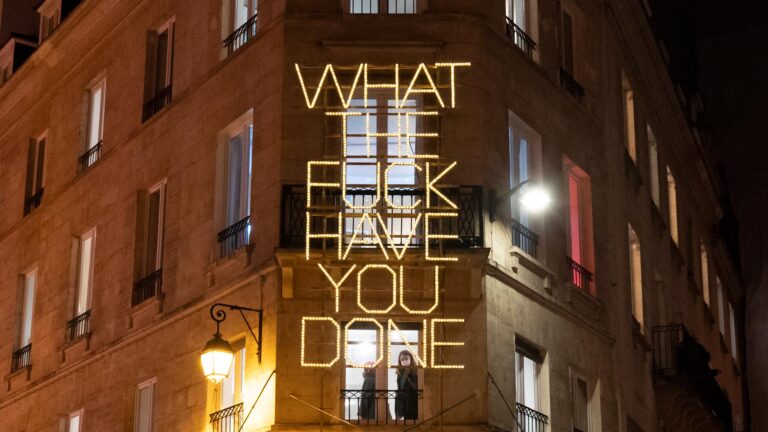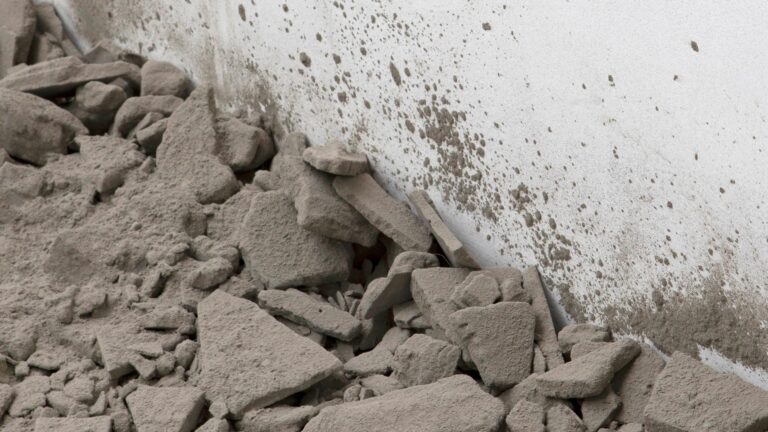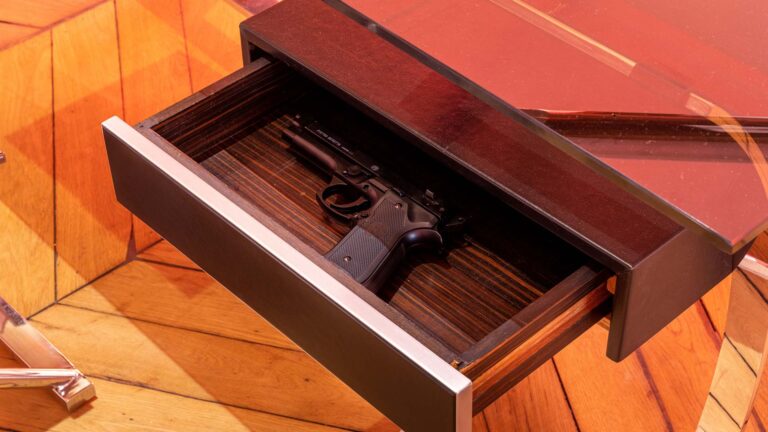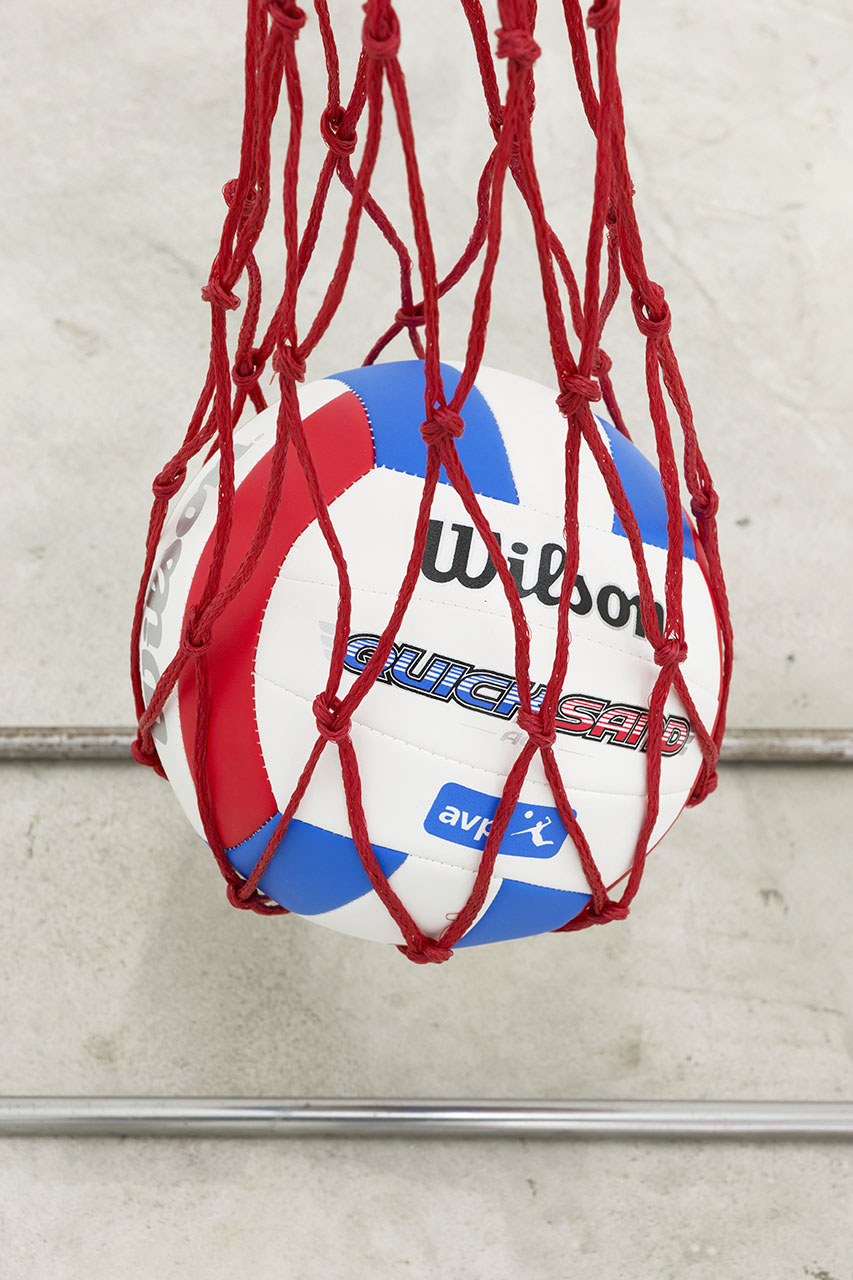Artists: Nelly Monnier, Eric Tabuchi
Exhibition title: L’invention d’une histoire vraie (2) (Inventing a true story)
Venue: Passerelle Centre d’art contemporain, Brest, France
Date: February 18 – May 14, 2022
Photography: Aurélien Mole / all images copyright and courtesy of the artist and Passerelle Centre d’art contemporain
The exhibition entitled ‘L’invention d’une histoire vraie (2) (Inventing a true story)’ follows the wanderings of Nelly Monnier (1988, France) and Eric Tabuchi (1959, France) through the French countryside. Following their recent exhibition at the GwinZegal art centre in Guingamp, this pair of artists presents part of their Atlas des Régions Naturelles (ARN) (Atlas of the Natural Regions) and a series of sculptural and pictorial works resulting from it.
It all began with an idea that was both mad and extremely time-consuming: to photograph and document the vernacular architecture in all the natural regions of France – quite a vague notion – from French Flanders to the Outre Forêt area of Alsace, from the Freto region of Corsica to Béarn in the Pyrenees or Léon in Finistère. It was a huge undertaking, halfway between a quest straight out of a heroic fantasy novel and an absurd and comic adventure à la Monty Python. Monnier and Tabuchi bring back very varied photos from their travels, their primary concern being to document the built environment, but by extension to analyse the landscapes and understand the incidence of humans on where they live. The pair photograph astonishing landscapes, strange architecture, bizarre situations, joyful places and places fallen into disuse. It is a multi-faceted portrait of France, sometimes touching, sometimes absurd, never judgmental, which they produce in the course of their expedition. Back in their workshop, they sort their photographs by geographical location or by theme. The approach is reminiscent of that of Bernd and Hilla Becher, a pair of German photographers known for their frontal shots of industrial architecture, and of that of ‘La France’ by Raymond Depardon who documented France as it modernised itself, or the work of Walker Evans who made his name portraying the United States of the Great Depression from 1929 to the Second World War.
Friends from the GwinZegal art centre in fact wrote that “in contrast to the speed of our age, Nelly Monnier and Eric Tabuchi work in praise of slowness and small country roads. They drive around slowly in a small car, discreetly combing the landscape, punctuating this imaginary atlas with countless stops.”
There is no violence apparent in the works of Monnier and Tabuchi, but it can sometimes be detected underlying the image. The recent history of rural exodus and relocation is portrayed just as much as tales belonging to each region. The territories of France are shown in their full architectural plurality: slate denotes the roofs of Brittany whereas the ‘tuyés’ (large chimneys for smoking food) stand out in the landscape of Haut-Doubs, for example. The Passerelle exhibition reflects its own territory by being mainly comprised of images of Léon and Trégor, with pictures of menhirs, market gardens and landmarks that act as navigational aids for shipping, sometimes ‘enhanced’ by inscriptions from the now traditional ‘ACAB’ to the local ‘BZH Libre’ (Free Brittany). A series of paintings and collages introduces a certain strangeness to the more documentary corpus of the photographs, by seeking to extract the essence and soul of the places visited by the two artists. These paintings are in a way symbolic of their own approach: what they are aiming for is not an analysis of the architecture of France but a pointless and poetic quest for an intangible Holy Grail – a fictional history of our regions.

